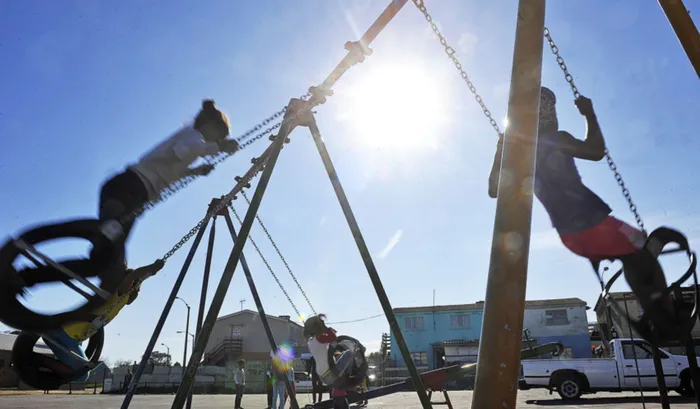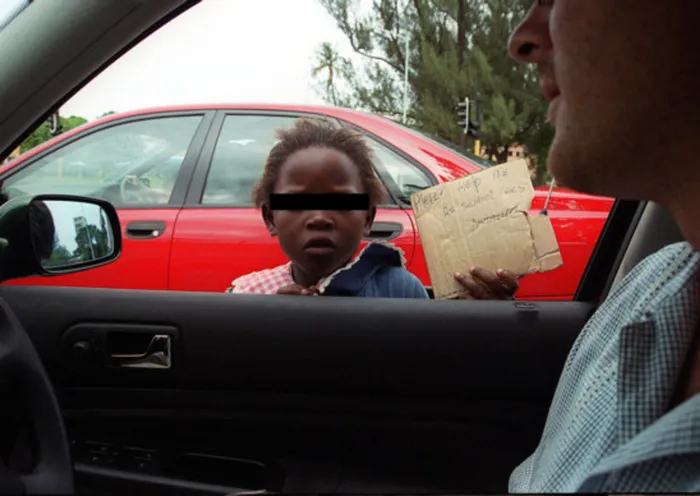
South Africa’s growing homeless crisis includes thousands of vulnerable children. Many flee broken homes, only to find hunger, abuse, and fear on the streets instead.
Image: Independent Newspapers
In South Africa’s city centres, including Durban, a growing crisis sees children living on the streets due to family breakdown, abuse, poverty, and systemic failures. Many flee unsafe homes and find little support from under-resourced schools and overwhelmed government systems. Once on the streets, they face hunger, violence, and exploitation.
According to Statistics South Africa, the number of homeless people in the country more than quadrupled between 1996 and 2022,from 13,135 to 55,719. Among them, children under 18 account for about 7%, highlighting the growing vulnerability of minors in this crisis. While smaller in proportion, homeless children face significantly higher risks due to their age, dependency, and lack of protection.
The 2022 census revealed that 45.7% of homeless children under 15 were living in shelters, while 26.9% were found in abandoned buildings or vehicles, reflecting unsafe and unstable conditions.
“From our experience at iCare, the most common reasons include family breakdown, domestic violence, neglect, poverty, and substance abuse within the home,” said Anne Slatter, director at the Durban-based shelter iCare. “Many children flee toxic or unsafe environments, while others are orphaned or abandoned.”
Clinical and sports psychologist Dr Keitumetse ‘Tumi’ Mashego added, “When there is a lot of trauma, dysfunction, toxicity, abuse or even perceived unfairness in the family, children can be negatively impacted and sadly some run away from home due to the inability to cope with the family dynamic.”
Once on the streets, survival becomes a daily struggle. “They enter survival mode,” Mashego explained. “There are issues of safety, hunger, keeping alive, and they could be targeted or bullied by other homeless people ,it becomes a ‘survival of the fittest’ game.”
The school system, ideally a safety net, often fails these children. “School disengagement is both a cause and a consequence of life on the streets,” said Slatter. “Once children drop out, they lose routine, structure, and hope for the future.”
Mashego highlighted the lack of psychosocial support in schools: “Ideally there should be social workers available to schools to screen, identify and intervene as early as possible. But unfortunately, it's not happening in the schooling systems for varying reasons, often failing the vulnerable.”

Once on the streets, children face hunger, violence, and exploitation.
Image: File
Homelessness is primarily urbanised, with 74.1% of homeless people found in metros. Gauteng leads with 46% of the total homeless population, while provinces like Northern Cape and Mpumalanga have smaller shares. These urban concentrations include children, who often remain invisible and underserved.
Government interventions are limited. Gugu Sisilana, spokesperson for eThekwini Municipality, noted: “Homelessness is not a local government mandate, even though it affects municipalities the most.” Children are referred to provincial departments like Social Development, while temporary shelters such as the Strollers Shelter offer short-term refuge.
In the face of these systemic gaps, NGOs step in. iCare’s Khutaza Restoration Programme offers a structured 12-week journey of rehabilitation, life skills, and personal development.
“Our outreach team builds trust with children on the streets and encourages them to visit our Hope Centre in Windermere,” said Slatter.
“Once trust is established, they enter our programme. After successful completion, they are either reunified or placed in one of our Family Homes, enrolled in school or skills training, and receive ongoing mentorship and support.”
Slatter Support doesn’t end at placement. “We supply school uniforms, stationery, monthly food parcels, and do monthly home visits,” Slatter said. “Where possible, we work closely with families to support reunification.”
Mashego stressed that psychological healing is essential to any intervention. “Holistic interventions are needed,” she said. “A multidisciplinary team consisting of social workers, clinical psychologists, and psychiatrists should be involved. The support should extend to the school, the family, and the community.”
Yet reintegration is complex. “In some extreme instances,” she said, “the child’s mental health challenges can relapse, leading the child to run away again.”
Sisilana said the city is improving coordination with NGOs and government departments. “The City appoints social workers through an internship programme,and refers to various institutions including the Department of Social Development and NGOs,” she said.
Sisalana said, since COVID-19, more than 500 people have been reunited with families through partnerships, while others have received IDs, skills training, or job placements.
Nationally, the South African Police Service (SAPS) has also played a significant role in addressing the crisis of missing persons,many of whom are vulnerable children. From 2020, 17,968 missing individuals have been reunited with their loved ones, including 2,963 children under 18, of which 1,919 were girls and 967 were boys.
Brigadier Athlenda Mathe, national spokesperson of the SAPS, said:
“There is no waiting period to report a loved one missing. The SAPS remains committed to its mandate of serving and protecting all people living in South Africa. Once a case is reported, a multidisciplinary team including detectives, crime intelligence, cybercrime experts, and search-and-rescue units is assigned to ensure every effort is made to locate the missing person.”
SAPS divers also recovered 3,099 bodies from water sources and assisted in rescuing 2,577 people. These statistics highlight the dangerous and often tragic outcomes for those who go missing,especially children without a stable home.
However, the broader picture remains concerning. According to Stats SA, 66.3% of homeless people cite financial hardship as the primary cause of their situation. Family-related issues (16.1%), substance abuse (11.7%), and conflict (8%) also rank high. These causes mirror the personal accounts faced by children on the streets, highlighting a web of intertwined factors that push minors into homelessness.
From the cracked pavements of city sidewalks to the doors of safe homes, the journey of a street-connected child is filled with risk, but also with possibility.
“At iCare, we’ve seen first-hand how consistent, compassionate intervention can transform lives,” said Slatter. “We remain committed to giving these children a second chance to thrive.”
Related Topics:
